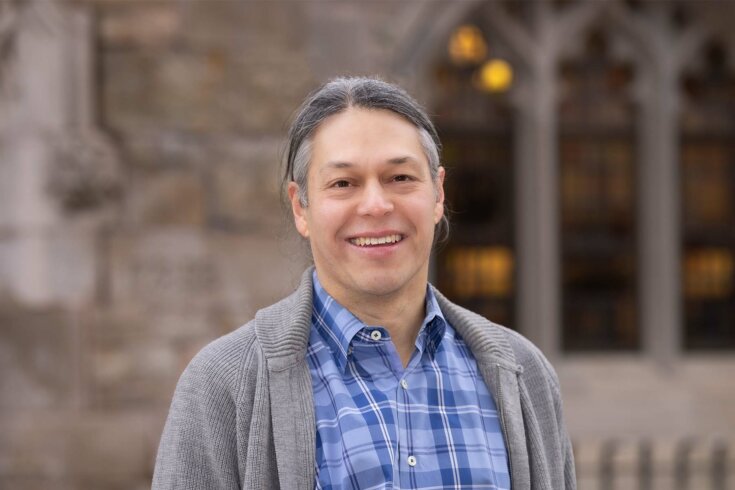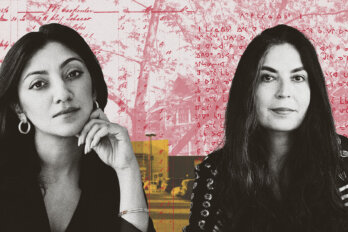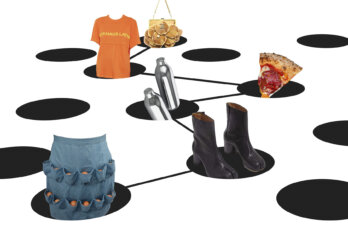Though Ned Blackhawk’s heralded new book, The Rediscovery of America: Native Peoples and the Unmaking of US History, focuses on America, Canadian readers will see core elements of their own history in his sweeping survey. Building on years of groundbreaking work by Indigenous and settler scholars, Rediscovery clearly sets out how Indigenous nations were key actors in shaping the very foundations of the US, from the American Revolution and the national Constitution to the country’s eventual borders.
Rediscovery begins with early Spanish inroads—following a path paved in advance by epidemic disease, horses, and lethal weaponry—into Indigenous territory in what is now the American Southwest, between the sixteenth and eighteenth centuries. Blackhawk blends vignettes with big-picture history, capturing singular moments to illustrate a continent in upheaval and the twists and turns of Indigenous resilience. From the Pueblo nations of the Southwest to Haudenosaunee (Iroquois) in the Northeast, Indigenous peoples applied numerous survival strategies: military resistance and adaptation; religious conversion; moving vast distances; among the Iroquois, refilling their ranks with the adoption of both other Indigenous and settlers’ children; trading; intermarrying; and playing European empires against one another in the same way the latter worked to divide and conquer Indigenous nations.
In the book, Blackhawk details how the Haudenosaunee in the St. Lawrence River and the Great Lakes reeled—at first—in the face of French weaponry. But they had a sophisticated political confederacy that predated First Contact, and they eventually established trading relations with the Dutch in what is now New York, acquiring guns that were superior to the French models. In the end, New France faced an existential crisis of its own that lasted for decades.
In Rediscovery, Blackhawk rejects any understanding of American history based on a racial binary. He raises the question of how African American slavery can be the only “original sin” of the country’s foundation, when it could not have taken root without driving out the original inhabitants. In one of his most arresting paragraphs, Blackhawk notes that nearly a million Native Americans were enslaved across the Americas in the sixteenth and seventeenth centuries and sent east across the Atlantic, many from Boston and Charleston. In the latter port, it was not until 1715 that more enslaved Africans from West Africa were imported than enslaved Indigenous people were exported.
As is the case with other settler states, American history must be viewed through the lens of the country’s relations with Indigenous nations. In the United States, Indigenous relations are woven into the nation’s constitutional founding, says Blackhawk. In a Constitution devised while the country was engaged in frontier wars, the nascent US recognized “an inherent sovereignty” in Indigenous tribes. “A member of a tribe is a citizen of both the United States and their tribal community, and that kind of duality is really unique,” Blackhawk says.
Blackhawk, a member of the Te-Moak Tribe of Western Shoshone Indians of Nevada and now a professor at Yale, grew up in Detroit. In 1989, he started an undergraduate degree at McGill University, where he was greeted by a billboard-sized cartoon image of an angry Indigenous man in a headdress, the symbol of the university’s male sports teams, known as the Redmen. Blackhawk led an effort that included several of the university’s handful of Indigenous students, as well as other non-Native allies, that eventually succeeded in getting the mascot removed even if McGill did keep the Redmen name for almost another three decades.
Blackhawk was a student at McGill when Elijah Harper, clutching his eagle feather, doomed the Meech Lake Accord, and during the Oka Crisis, which saw Mohawk activists face Quebec police and the Canadian army in a seventy-eight-day standoff. He says Canadian historians “are pretty good at recognizing how Native history shaped the formation of Canada before 1867. You have the fur trade, you have the Métis, Louis Riel and all these things that make it clear that you can’t understand pre-Confederation Canadian history without Native peoples.” (It’s arguable, in fact, that Canadian existence is otherwise inexplicable. Both sides in the War of 1812 had Indigenous allies, but without their contribution on the British Canadian side, there would today be no border and only one nation north of the Rio Grande.)
But starting in the nineteenth century, as the power balance turned against Indigenous peoples—correlating with the “scientific” racism that became the justification for Western imperialism around the world—awareness, let alone respect, dissipated. In Canada and the US, poverty, often violent marginalization, and the forced acculturation of the residential schools soon followed.
Rediscovery appears at a moment when both the modern narrative of disease, violence, and exploitation driving helpless Indigenous peoples to near extermination as well as the older story of heroic settlers taming an almost “empty” continent are open to challenge by new approaches. Some of these swing the pendulum too far in recognition of an Indigenous empire, argues Blackhawk. Yes, he writes in a review of Indigenous Continent (2022) by Finnish-born Oxford historian Pekka Hämäläinen, Indigenous fighters did win their share of battles, but only one side’s losses were often followed by “forced removal, ethnic cleansing, reservation confinement and child abductions.”
Blackhawk says many of the ways of conceptualizing his country’s history minimize Indigenous struggles and responses. And, in terms of creating modern America, they obscure a key question: “What does continuing Indigenous power help us understand [about the formation of the US], and how does it explain the subsequent course of both Indigenous and other people’s history?” Versions of the past that downplay the re-formation, power, and resilience of Indigenous polities and peoples in the face of cataclysmic trauma ignore their shaping of settler society as well as their shaping by it and misinterpret the American story.





